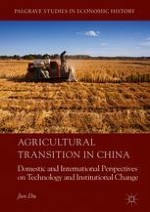2018 | OriginalPaper | Buchkapitel
5. Agricultural Transition in Taiwan: Towards a Comparative Study with Mainland China
verfasst von : Jun Du
Erschienen in: Agricultural Transition in China
Aktivieren Sie unsere intelligente Suche, um passende Fachinhalte oder Patente zu finden.
Wählen Sie Textabschnitte aus um mit Künstlicher Intelligenz passenden Patente zu finden. powered by
Markieren Sie Textabschnitte, um KI-gestützt weitere passende Inhalte zu finden. powered by
